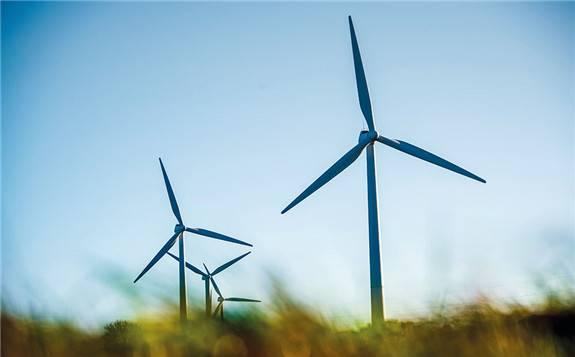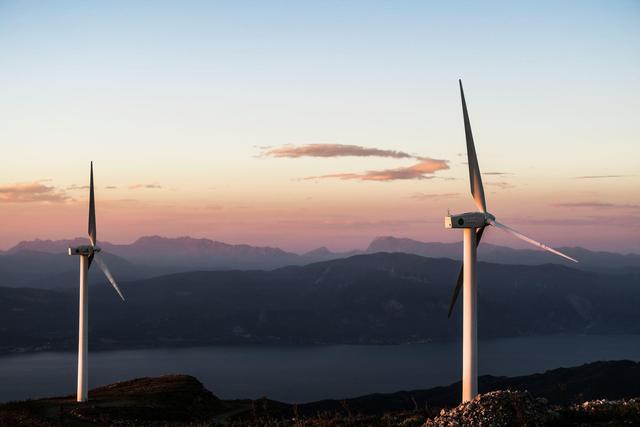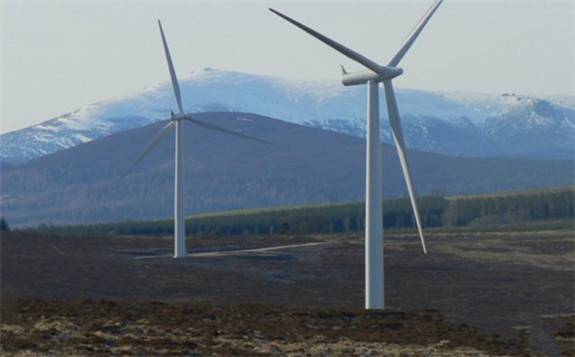Guide: Over the past 40 years of reform and opening up, my country's energy development has attracted worldwide attention. At present, the country has entered a stage of high-quality development, and my country's energy is also facing historic transformation a
Over the past 40 years of reform and opening up, my country's energy development achievements have attracted worldwide attention. At present, the country has entered a stage of high-quality development, and my country's energy is also facing historic transformation and innovation. Innovation starts with a change in thinking, and progress first comes from a change of concept. The following six aspects of energy concept innovation are driving China's energy transformation.1. The proposal of "Energy Revolution" leads the new energy strategy
In 2014, General Secretary Xi Jinping put forward the idea of "energy revolution". This means that my country's energy development must have qualitative changes and qualitative transformations and require revolutionary new strategies. Among the "Four Revolutions", the energy consumption revolution means the transformation from extensive and inefficient to conservation and efficiency; the energy supply revolution means the transformation from black and high carbon to green and low carbon; the energy technology revolution is the support of the consumption revolution and the supply revolution; The energy system revolution is the guarantee of success. The idea of "energy revolution" is based on summing up the development experience at home and abroad, and it is the internal demand for high-quality development and sustainable development in my country.
Taking the energy consumption revolution as an example, in the early stages of development, my country focused on the amount of energy development and did not emphasize energy efficiency. From the reform and opening up to the beginning of this century, my country's energy consumption elasticity coefficient fluctuated between 0.4 and 0.6. After 2000, with my country's industrialization and urbanization process, primary energy consumption once showed an unusually high growth trend, especially in 2003 and 2004, the energy consumption elasticity coefficient exceeded 1.5.
In recent years, with energy intensity and carbon intensity included in the assessment indicators, the energy efficiency has been included in the national five-year plan indicators and local assessment indicators from the consumer side. In the past decade, my country's energy consumption elasticity coefficient has gradually declined. During the "Eleventh Five-Year Plan" period, the average annual energy consumption elasticity coefficient is 0.57. During the "Twelfth Five-Year Plan" period, the average annual energy consumption elasticity coefficient is 0.43. This is a clear improvement. But so far, my country's energy intensity is still 1.5 times the world's average level, which is more than the world's advanced level, and has great potential for energy saving. Energy conservation and efficiency improvement are the top of China's energy strategy. my country's "energy revolution" has a long way to go.

2. Rethinking the energy security concept
1. Energy supply and demand security concept
For a long time, the energy security we understand is the security of supply and demand, that is, the supply can not keep up with the demand, it is unsafe. This has led to a situation in which extensive supply meets the demand for excessive growth. With the deepening of the understanding of the economic development mode, we have more new thinking on the understanding of energy supply and demand security: energy demand also has unreasonable demand, such as various forms of energy waste, which abounds. Suppress unreasonable demand." At the same time, the supply side should also change the extensive supply to meet the demand with high-quality scientific supply. Therefore, the new energy supply and demand safety concept should be expressed as: "Scientific supply meets reasonable demand."
When it comes to the safety of energy supply and demand, people will first think of coal, oil, and gas. This is natural, and it is still a realistic problem. Especially in China, where oil and gas are highly dependent on foreign countries, the safety of their supply needs to be highly valued. problem. At present, my country's energy has entered a stage of diversified development, and it is necessary to do a good job in scientific mining and utilization of coal, stabilize oil and gas, strengthen exploration, increase reserves, and develop international cooperation. It is also necessary to coordinate and complement fossil energy and non-fossil energy.
It is worth emphasizing that renewable energy is energy that can be controlled by the country and is not affected by international geopolitical changes. As the proportion of non-fossil energy increases, it will play an important role in energy supply security and energy independence.
2. Energy and environmental security concept
Energy security is not limited to supply and demand security.
Since the 1960s, the problems of environmental pollution and ecological destruction worldwide have become increasingly serious. Ecological environment security and energy structure are inseparable. China has included the ecological environment insecurity caused by energy in its energy security concept.
In January 2013, four smog processes covered 30 provinces (autonomous regions and municipalities) in China. The deterioration of the atmospheric environment affected the basic living conditions of the people, and it has become an unbearable environmental problem. Atmospheric environmental pollution is directly related to the coal-based energy structure and extensive energy consumption.
On September 10, 2013, the State Council issued the "Air Pollution Prevention and Control Action Plan", which called for speeding up the adjustment of the energy structure and increasing the supply of clean energy. From 2015 to 2016, the “Law of the People’s Republic of China on the Prevention and Control of Atmospheric Pollution”, “Water Pollution Prevention and Control Action Plan” and “Soil Pollution Prevention and Control Action Plan” were successively issued, which put forward more stringent requirements on the discharge of pollutants in the energy field. The clean and efficient use of coal is regarded as a national strategy, and new energy and renewable energy are vigorously developed. The sustainable development of the environment depends on the energy revolution. The environmental safety concept of energy has become an important part of the energy security concept.
3. Energy and climate security concept
Due to the strengthening of human activities, environmental capacity issues have been extended to climatic capacity, and the constraints of climate change on fossil energy activities have increased significantly. The world is facing not only a sharp increase in the intensity and scale of climate change caused by human activities, but also a significant shrinkage of the climate capacity space caused by climate warming.
At present, the climate capacity space in many regions of the world is becoming saturated, and some regions are also overloaded. The overall climate risk is increasing. After fully considering my country's development stage and actual capabilities, "China's National Independent Contribution" proposed that carbon emissions will peak around 2030 and strive to be realized as soon as possible. The realization of this goal is first and foremost the need for my country's own sustainable development.
The main reason for climate change is the emission of greenhouse gases from fossil energy combustion. In order to respond to climate change, China must conduct energy security management under carbon constraints. In 2018, my country's unit GDP CO2 emissions were reduced by 45.8% compared to 2005, and the 2020 target was reached ahead of schedule. The proportion of non-fossil energy consumption in my country has increased from 9.4% in 2010 to 14.3% in 2018.
Nevertheless, it must be noted that since 2006, my country has been the country that emits the most carbon dioxide in the world, and it still requires arduous efforts to save energy, reduce emissions, and change the energy bias of coal. What is important is that responding to climate change and promoting a low-carbon transformation of energy not only promotes the development of new energy, but also promotes a new type of economic growth and promotes a win-win situation between the economy and the environment.
Looking at China's energy security from an international perspective and a long-term strategic perspective, we need to see the vigorous development of energy technology. Technology is replacing resources as a guarantee of energy security. It must be based on enhancing the core competitiveness of energy modernization and occupying the strategic commanding heights of future energy technology. Rely on energy technology innovation to ensure energy security.

3. Development of energy resources concept towards non-fossil energy
In traditional concepts, energy resources refer to coal, oil, gas, and water. In 2007, the Chinese Academy of Engineering carried out research on China's renewable energy. At the time, the energy industry recognized hydropower, but the general recognition of non-aqueous renewable energy was "insignificant." After research, the Chinese Academy of Engineering proposed in 2009 that "important" will replace "insignificant", and that non-fossil energy can give us a future.
Speaking of China's endowment of energy resources, only saying "rich in coal, lack of oil, and lack of gas" can no longer keep up with development. Rich renewable energy resources are an important endowment of energy resources in China.
Further expand to non-fossil energy, it should include nuclear energy and renewable energy. In 2019, non-fossil power installed capacity accounted for 41% of my country's installed power, and non-fossil power accounted for 32.6% of power generation. In 2019, my country's wind power installed capacity reached 210 million kilowatts, and photovoltaic installed capacity also reached 204 million kilowatts, which is less than one-tenth of the technologically exploitable resources.
High costs used to be an obstacle to non-aqueous renewable energy. In the past two decades, the cost of photovoltaics and wind power has dropped by dozens of times. On the other hand, energy storage technology is also developing rapidly, from physical energy storage (pumped energy storage, compressed air energy storage), to chemical energy storage of many types of batteries. Benefiting from advances in materials science, chemical energy storage technology has advanced rapidly and prices have continued to drop. Energy storage technology can not only solve the intermittency of solar energy and wind energy, but also promote the development of new energy vehicles and community microgrids, so energy storage is given multiple meanings.
At the same time, China's current nuclear power technology keeps pace with the world's advanced level, mature third-generation technology, fourth-generation nuclear power technology, modular small reactor, advanced nuclear fuel and recycling technology are steadily developing, and controlled fusion technology (artificial sun) is making progress . In the future, nuclear fusion on the ground (light nuclear fusion) and nuclear fusion in the sun (solar energy) are likely to become energy sources that humans can rely on for a long time.
Due to the limitation of understanding the endowment of energy resources, some regions with heavy energy load have long considered themselves "heavy load and lack of resources", but have not realized that there are abundant renewable energy resources around them that can be developed, forming an external Reliance on incoming calls and foreign coal. This is a practical issue affecting energy policies and energy strategies.
Re-recognizing my country's energy resource endowment is an essential factor in correctly understanding its national conditions. It has directional and strategic significance for ensuring long-term energy security of the country and guiding energy transformation.
4. Energy transformation includes both the optimization of the energy structure and the transformation of the spatial pattern
The process of low-carbon energy in the world has further accelerated, and natural gas (including unconventional natural gas) and non-fossil energy have become the main directions of world energy growth.
The 13th Five-Year Plan for Energy Development clearly establishes a clean, low-carbon, safe and efficient modern energy system. With the efforts of all parties, the proportion of coal in China’s total primary energy consumption has decreased year by year, from 76.2% in 1990 to 57.7% in 2019. At the same time, the proportion of non-fossil energy power generation in China has been continuously increasing In 1978, China's non-fossil energy power generation, or hydropower generation, accounted for 17.4%. In 2019, China's non-fossil energy power generation accounted for 32.6% of the total power generation. The “Energy Production and Consumption Revolution Strategy (2016-2030)” issued by the state proposes that by 2050, the proportion of non-fossil energy in primary energy will reach 50%, and the proportion of coal in primary energy will fall below 30%.
The Nineteenth National Congress of the Communist Party of China proposed that my country's development was unbalanced and insufficient. The eastern part of China is a large energy-consuming household, and the western part is a large-capacity household. Improving consumption capacity through economic development in the west and the ability to increase production capacity in the east can alleviate uneven and inadequate development. The eastern region can combine the energy from "far away (such as power transmission from west to east)" with the energy from "nearby", attaching great importance to the development and mobilization of energy around.
The technically exploitable offshore and onshore wind energy resources in the central and eastern regions of my country are 1.1 billion kilowatts, and the centralized and distributed solar energy can develop 900 million kilowatts. However, the proportion that has been developed in the central and eastern regions is less than 10% of the technologically exploitable volume. If the central and eastern provinces mobilize the energy around them and combine energy from afar, not only will development be more balanced and sufficient, but also the level of self-control and security will be higher.
In terms of economy, the research team of Tianjin University and North China Electric Power University calculated that the self-generated electricity in the east is cheaper than the cost per kilowatt of electricity sent and delivered in the west. Taking into account biomass energy, geothermal, hydropower, nuclear power and natural gas, a high proportion of energy self-sufficiency in the east is entirely possible. Considering the relatively advanced energy storage, energy-saving technology and information technology in the east, coal power provides peak shaving with flexibility in reforming while providing electricity. It is not only necessary, but also possible to transform energy “consumers” into energy “consumers” in eastern my country.
The optimization of the energy structure and the transformation of the energy spatial pattern will mutually enhance my country's energy independence and resilience, and promote a win-win situation between the economy and the environment.
5. the combination of centralized and distributed will change the mode of the energy system
In the past, I was used to the concept of centralized. In recent years, the development of distributed energy sources such as photovoltaics, natural gas, wind power, biomass energy, and geothermal energy has become an important part of my country's response to climate change and energy security. The importance of distribution has been increasingly valued by people.
Distributed energy is an important direction of energy development. The technological progress and application promotion of distributed energy will greatly change the traditional energy production and consumption methods and consumption patterns. This is not only a major change in energy and electricity, but also contributes to the integration of urban and rural energy transformation. Low-carbon energy networks (solar, wind, biomass, geothermal, natural gas), whether rural or urban, can be interacted by centralized large power grids and decentralized microgrids.
The micro-grid can manage the scattered small-capacity and energy storage of self-generated power through big data and other informatization methods. The concept of virtual power plant (VPP) came into being. In the future, a series of low-carbon energy network concepts will be combined with large power grids and large energy bases. The distributed power generation and active load in the distribution network will show rapid growth, and more power users will be transformed from a single consumer to a consumer. Energy-producing consumers, that is, producers (Prosumers), which combine electricity with the people, can cultivate large-scale consumers.
Producers and consumers rely on the Internet and modern information and communication technologies to aggregate distributed power, energy storage, loads, and other resources scattered in the power grid, perform coordinated operation control and market transactions, and provide auxiliary services to the power grid. In addition, the problems of garbage besieged cities and garbage besieged villages facing modernization and beautiful China can be solved through the utilization of solid waste. Garbage and solid waste are used as energy sources through distributed utilization, such as composting, biogas, incineration power generation, etc., and become one of the renewable energy sources. If my country has a high proportion of producers and consumers, China's energy situation will undergo revolutionary changes.

6. The combination of energy and information technology changes the energy format
In recent years, mobile Internet, big data, cloud computing, Internet of Things and other digital information technologies have developed rapidly. The global economic society is forming a new development prospect. As a new format, the digital economy is becoming a new driving force for economic and social development. Countries and enterprises around the world One after another started digital transformation.
Under this tide, digital technologies such as the "big cloud move" are increasingly integrated into the energy industry, reshaping the energy format. The combination of energy, power, and Internet technologies forms the Energy Internet of Things (IoT), which realizes horizontal multi-energy complementation and electric-heat collaboration, and vertical source, network, charge, storage, and use coordination and optimization. It has comprehensive interconnection, comprehensive perception, comprehensive intelligence, and comprehensive New energy ecosystem with coordinated features (smart energy).
Artificial intelligence and AI technology are also combining. This combination is a multi-energy energy service industry, which is characterized by improved energy efficiency and high-quality personalized services. To become an energy industry + energy service industry, the energy industry not only provides energy, but also services, and the function of services will become stronger and stronger. This is the supply-side energy revolution driven by the demand side.
The energy transition is part of the industrial revolution. The energy transition is long-term and arduous, but the direction is clear and needs to be based on reality and look to the future. The innovation in the above six aspects of the energy concept will lead the energy revolution and jointly achieve the new normal, high quality and new system of energy.




























